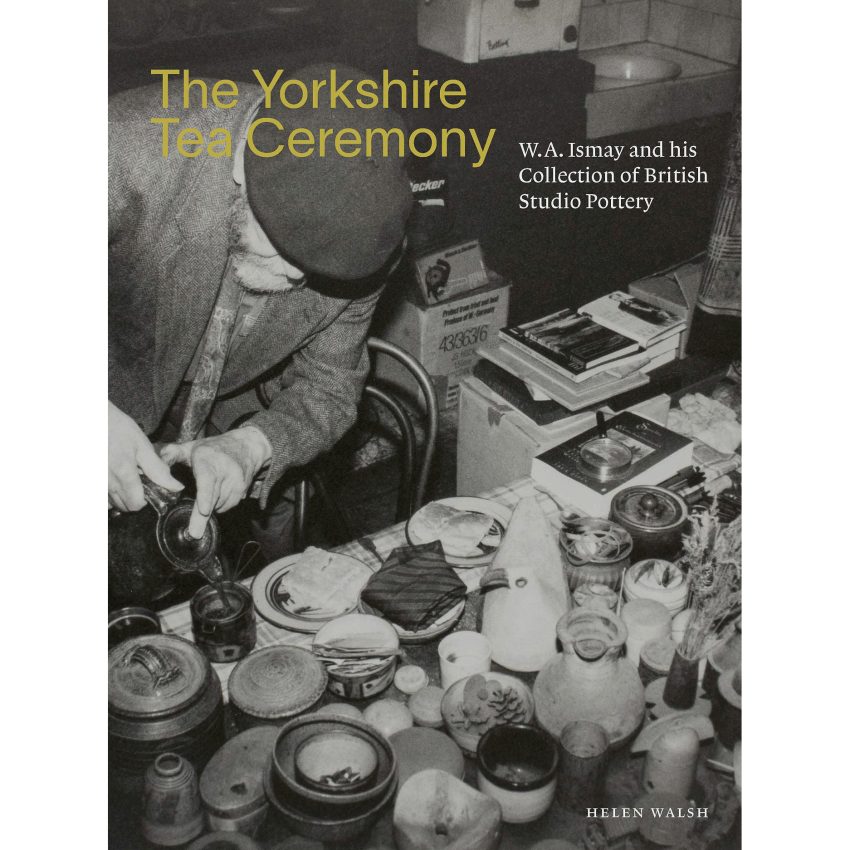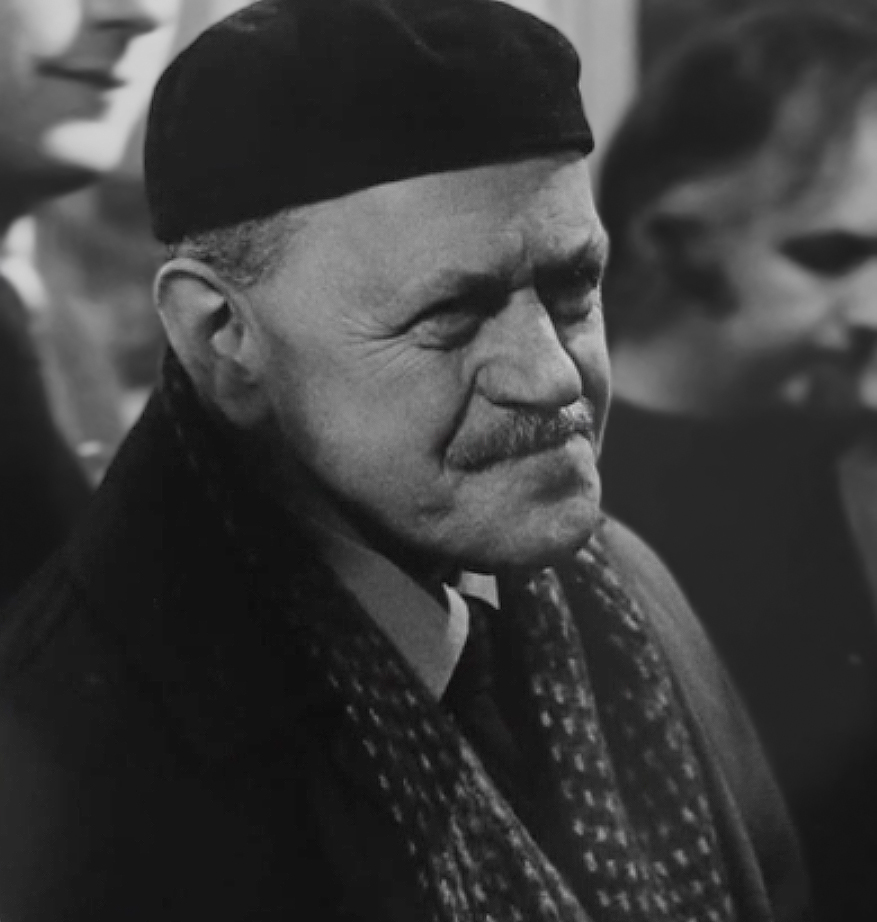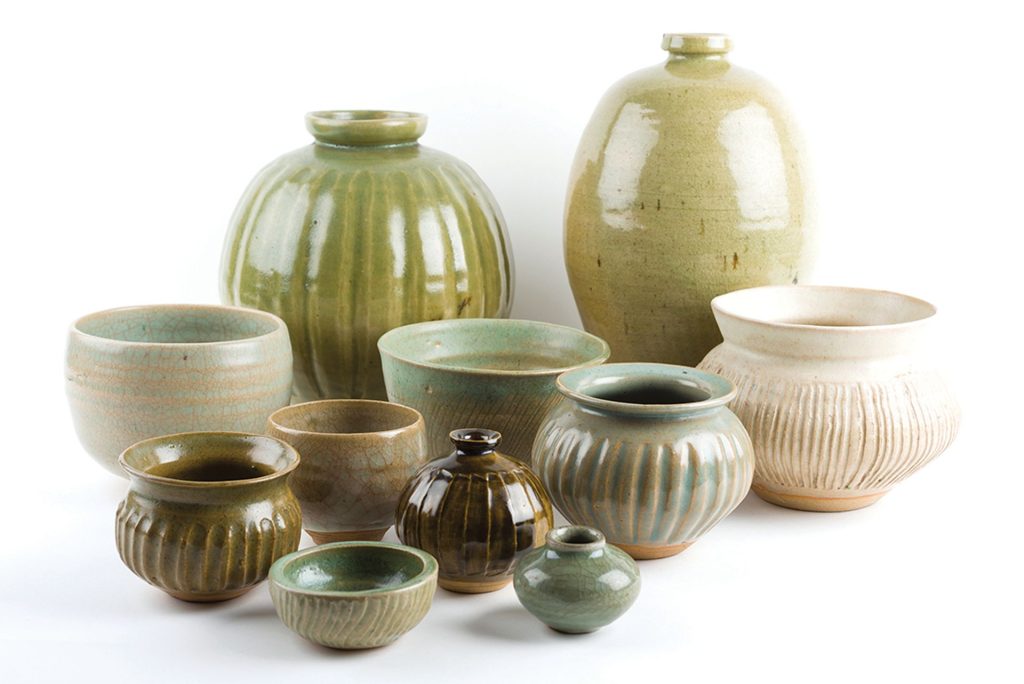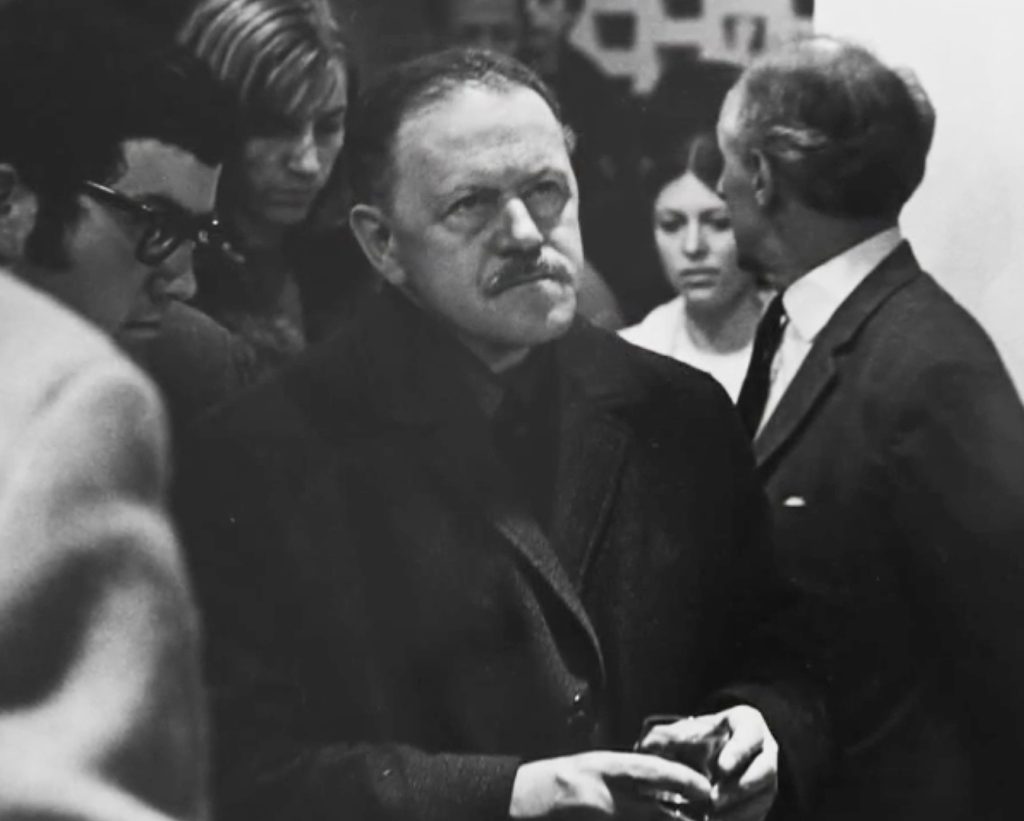
The Yorkshire Tea Ceremony
. . . . . . . . .
The Yorkshire Tea Ceremony: W.A. Ismay and his Collection of British Studio Pottery by Helen Walsh
This attractively produced book provides a qualified insight into the life and legacy of Yorkshire collector-extraordinaire, W.A. Ismay (1910-2001). It is written by Dr Helen Walsh, Curator of Ceramics at York Art Gallery’s Centre of Ceramic Art (CoCA) and was published in 2021 to coincide with the opening of the inaugural exhibition of the same name in York. This should come as no surprise as the Yorkshire Museum was where Ismay had painstakingly chosen to donate his extraordinary collection of 20th century studio ceramics.
To put his collection into perspective, W.A. Ismay, or Bill to his friends, collected some 3,600 pots by over 500 artists between 1955 and 2001 and created a supporting archive of around 10,000 items. This made him one of the most prolific collectors of British studio ceramics of the post-war period. The CoCA is currently digitising this extensive archive so it can be used to help research and understand the development of British studio ceramics for future generations. Indeed, York Museums Trust has a lot to thank this renowned collector for and Walsh confirms that without his generous gift, CoCA would not exist, even though Ismay always saw himself as a ‘temporary custodian’ of his own collection.
Bill Ismay was a rather eclectic collector, albeit one with a very keen perception. Not only did he know and collect the work of the most significant ceramicists working in the UK, such as Lucie Rie, Hans Coper, Bernard Leach, Michael Cardew, Richard Batterham, Ladi Kwali and Jim Malone (to name but a few), he also purchased numerous examples of lesser-known potters.

“His love of pots made him friends, and his family of pots in his house kept him company.”
Jane Hamlyn
He was also a rather enigmatic character. He remained single throughout his life. At work, as a librarian, he was known as a well-respected diligent professional. Later in life, he took to wearing his trademark beret and, due to his increasingly poor eyesight, had a habit of deploying a magnifying glass to study the tiny details of individual works. This meant that there was a sense of awkwardness about him. He was also very much a person of his time, as perhaps we all are. But he was also someone completely without the airs and graces of many other collectors of art (with a capital A). He did not own a car and would therefore cycle great distances or use public transport to get to an exhibition or other destination. He also never visited an exhibition without making a purchase. As his collection grew, it would take up an increasing amount of the limited space in his modest house. So much so that every inch would quickly be appropriated to accommodate a newly acquired piece of ceramics. And, as time passed, this would always be the first thing that struck (even overwhelmed) those fortunate to get an invite into this living exhibition.
There are many reasons why people are attracted to the medium of ceramics, primarily because of the way innate aesthetic qualities speak to our sensibilities. In many cases, it is also because ceramics are functional (in the sense of being integrated into our everyday lives), tangible and often reasonably affordable. And, perhaps not least of all, ceramics have a language that is profoundly human. Given the opportunity to indulge himself in the collecting process, for Ismay it also opened the door to other forms of interchange.

“The more I find out about pottery, the more I see there is still to learn.”
W.A. Ismay
Bill Ismay wrote of the responsibility of being a dedicated collector as being ‘more than self-indulgence’ and was always keen to share his life’s passion with other enthusiasts, collectors, students, academics and inquisitive potters. He enjoyed receiving people in his small terraced home in Wakefield (‘The house is so congested by now that it is very difficult’) and encouraging them to pick up items and experience them for themselves. In this sense, ceramics, in all its diversity, offers a strong social element, and for Ismay often generated close friendships, interactions, anecdotes and obsessions. He would always round off such visits with a cup of tea or coffee, when he would invite his visitors to select their own cup to drink from.
He was also often at pains not to upset the often delicate relationships and attachments he fostered with his potter friends, as with his exhibition reviews and article writing. Those who knew him readily corroborate his extensive knowledge of all things ceramic, including aspects of aesthetics and the intricacies of the entire production process.
As a testament to his dedication and for recognition of his services to studio pottery, Bill Ismay was awarded an MBE in 1982.

“Pottery has become almost as much a part of my life as it is for dedicated potters.”
W.A. Ismay
This publication is very much a detailed biographical portrait of both the man and his collection, written by Helen Walsh as a supplement to her PhD research. This means that the book does not have the look and feel of a specialised doctoral dissertation, but rather a clear, well-researched and structured portrayal by a professional who has a deep connection with her subject. Indeed, it took the author no less than five years to actually catalogue all of the works!
The book is divided into 21 chapters and sketches out Ismay’s life story, from humble beginnings to becoming a librarian and fostering aspirations of becoming a writer, before turning seriously to collecting pottery. Throughout the years, he meticulously documented his acquisitions in his notebooks and this book presents a wonderful overview of the developing story of the collector and his collection both textually and visually. The book concludes with a summary of ‘potters and artists represented in the W.A. Ismay collection’, which not only serves to provide insight into the scope and diversity of this amazing collection, but also as a source of good-hearted voyeuristic jealously for fellow enthusiasts of contemporary studio pottery.
This book makes for an extremely enjoyable read and can justifiably be highly recommended to anyone interested in studio pottery in general, but specifically to all those, like Bill Ismay, with a passion for ceramics.
Neale Williams
. . . . . . . . .
The Yorkshire Tea Ceremony: W.A. Ismay and his Collection of British Studio Pottery by Helen Walsh
York Museums Trust/Paul Holberton Publishing
275 x 210 mm
168 pages, approx. 130 illus.
ISBN: 978-1-913645-15-1
. . . . . . . . .
The exhibition at the Centre of Ceramic Arts will run until the Spring of 2024. However, these works form part of CoCA’s wider collection of 20th century studio pottery, which is now among the world’s most extensive collections of British Studio Ceramics, with more than 5,000 pieces, and certainly well worth visiting.
York Art Gallery: Centre of Ceramic Art (CoCA)
. . . . . . . . .
One thought on “The Yorkshire Tea Ceremony”
It is a fine book that prompted me to write a piece on the Harlequin Gallery website about Bill’s visits to the gallery much of which happened after the period covered by the book. This can be found at http://www.studio-pots.com/bill-ismay/